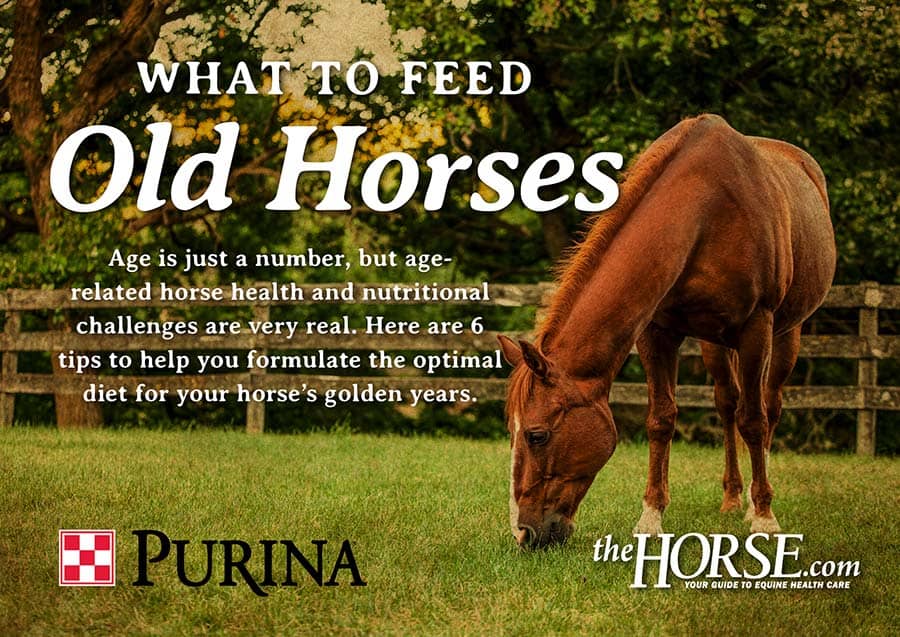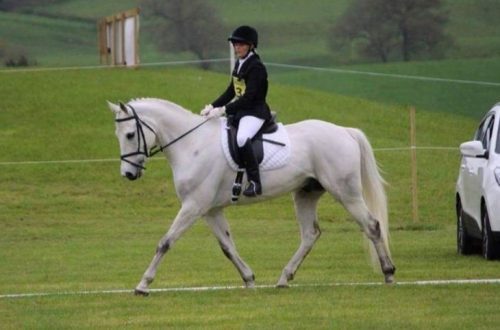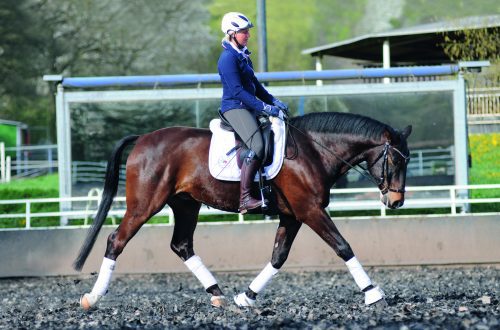
How to feed older horses
How to feed older horses
Twenty percent of the US horse population is over 20 years of age. As they age, their risk of developing certain diseases increases, such as colic, intermediate pituitary dysfunction (PPID or Cushing’s disease), dental disease, obesity, or weight loss. Fortunately, these issues can be helped food. After all, “age is a number, not a disease,” said Megan Shepherd, assistant professor of large animal clinical sciences at the Maryland College of Veterinary Medicine, Blacksburg, Virginia. She spoke out about feeding older horses at an American veterinary convention held Dec. 3-7 in Orlando, Florida.
calories and energy
The Condition Assessment Scale (BCS) is suitable for assessing body condition at all stages of life, but weight control is especially important in older horses.
Megan Shepherd believes that a condition of 5 on a 9 point scale (http://hod.vsau.ru/exter/condition.html) is ideal for older horses. A horse without any metabolic problems may have a condition of 6 points, with the expectation of possible weight loss due to unforeseen illness. Animals with arthritis may do better with slightly less weight, as there is less stress on their joints (in this case, a score of 4 is acceptable).
Sedentary and/or fat older horses require less energy than hard-working, poorly weight-bearing horses. Hard working horses often benefit from adding oil to their rations, while light working or overweight horses usually need hay and supplements.
Water
Water is the most important nutrient for any horse. Ensuring older horses have free access to drinking water will help reduce the risk of colic. The need for water increases with the increase in hay consumption, especially in winter. Watch the water temperature. In winter, make sure the water is not frozen and heat it up periodically if possible. Horses with PPID drink and urinate more, so they also need more water.
Hay
The basis of the diet should be high-quality hay. If hay alone does not meet the energy needs of an older horse, add beet pulp or older horse mixes, or add oil to increase calorie intake.
Generally, when a feed meets a horse’s energy needs, it will also meet its protein needs. However, for horses on a hay-only diet, Megan Shepherd recommends giving supplements to ensure adequate amounts of vitamins and minerals.
If the horse chews badly, leaves tourniquets, replace regular hay and grass with pre-soaked granular hay. Poor chewing of food indicates problems with the teeth, so do not forget about the importance of caring for your senior citizen’s teeth.
Other additives
Horses with PPID may be insulin resistant. This means that the cells of their body do not respond to the hormone insulin, so these horses need to limit their intake of starch and sugar.
Vitamin E has strong antioxidant properties. In horses with PPID, the antioxidant potential of the intermediate pituitary gland is reduced and vitamin E supplementation may be beneficial. These horses may also have increased free radical production resulting in increased oxidative damage. Thus, the need for vitamin E in these horses increases.
For horses with joint disease, supplementation with omega-3 fatty acids such as eicosapentaenoic acid and docosahexaenoic acid (you may know them as EPA and DHA) can help reduce joint inflammation.
Summary
It is important to tailor the horse’s diet to its level of activity and health at each stage of life. Provide the basic nutrition of clean water and quality hay, and have a qualified veterinarian help you with the rest of your retiree’s diet.
Nettie Liburt; translation by Kuzmina V.N.





